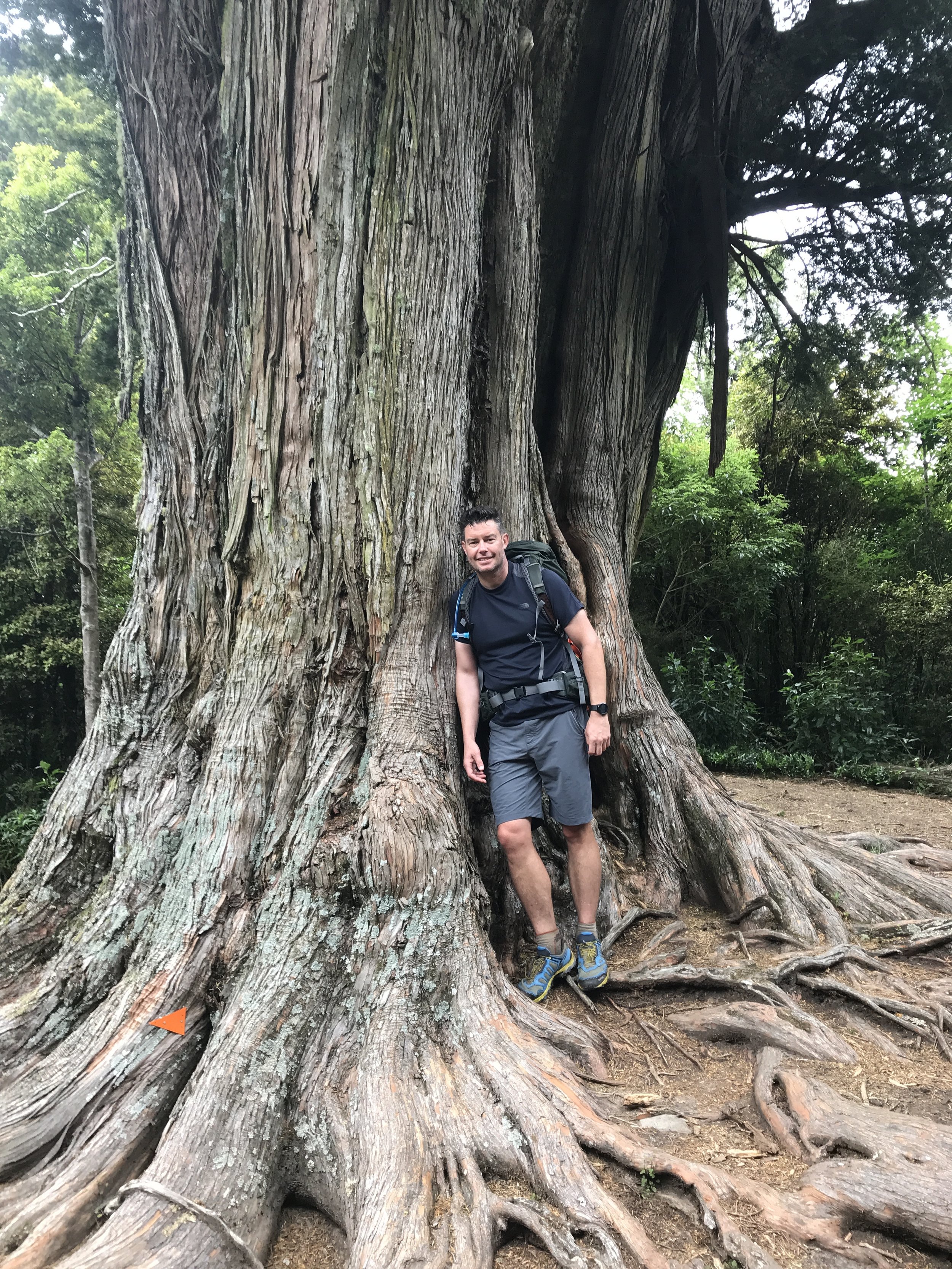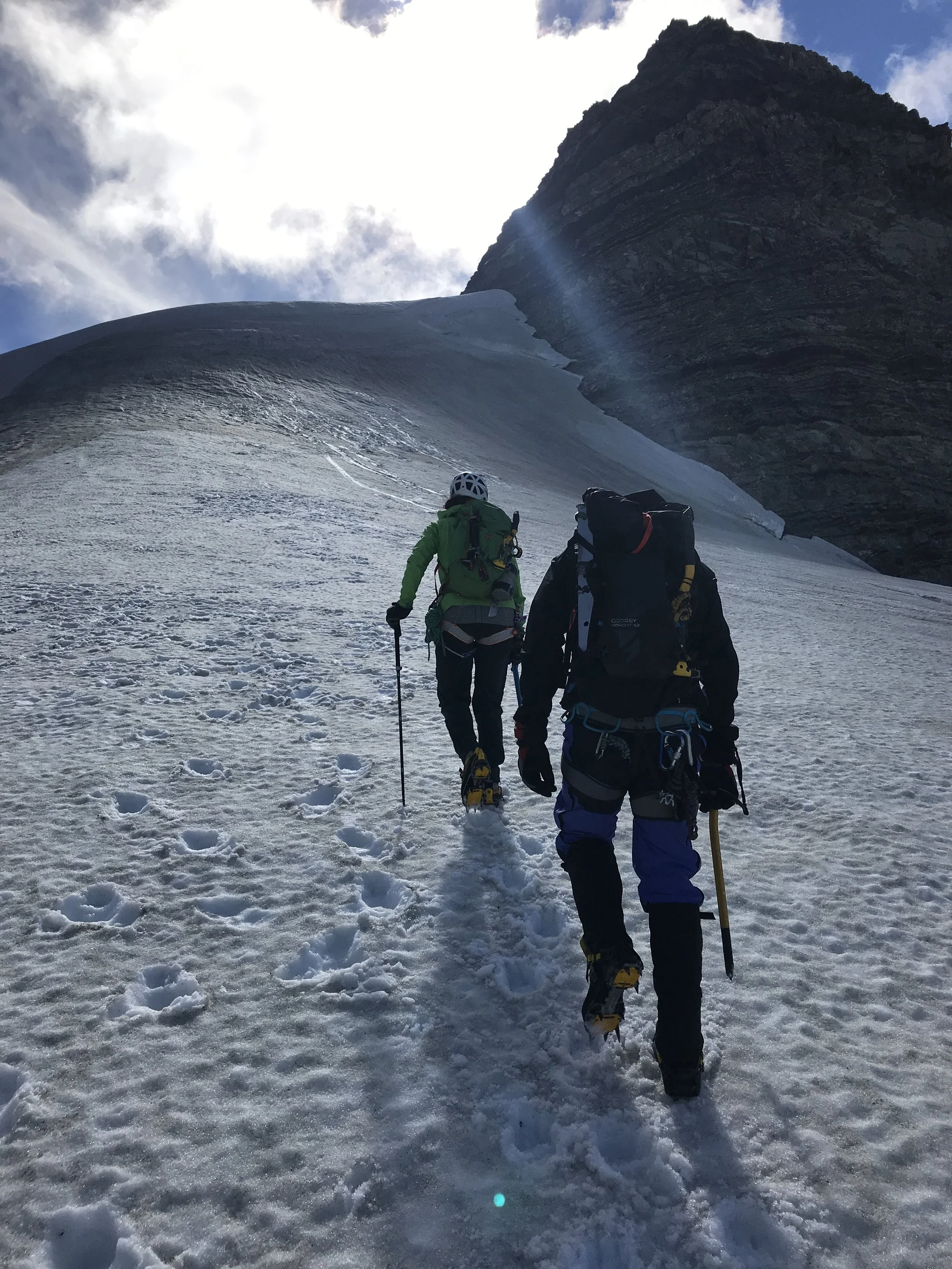Banks Peninsula and gaiters (not the animal kind)
Banks Peninsula New Zealand
I thought they were dangerous prehistoric creatures, cousins of the alligator. Gaiters. But it turns out they are a necessity in New Zealand “tramping” - hiking that is done on a not well maintained trek, marked only by cairns and maybe poles a few hundred feet from each other. There are usually rivers, streams, rocks and tall grass between those markers and you need a compass and a relief map to make sure you’re going in the right direction. Treks that are maintained and repaired regularly after rainstorms and rivers damage them, are called “walks” - like the 8 Great Walks of New Zealand. They most closely resemble the hiking paths we’re used to in the US. Brent and I have done two of the great walks - Routeburn and Kepler, down by Fiordland in the south of the South Island. By far, these have been the most beautiful alpine places, right next to Mt Cook and the Tetons in the US, that I have visited. And maybe Yosemite from 15 years ago before the crowds ruined the experience.
As part of our preparation for the mountaineering course, Brent and I need to comfortable ascending 3,500 feet in 2-3 hours carrying a 50 lb pack. So in Christchurch, Brent forms a grueling plan that looks more like something out of a bootcamp training book than casual “hiking”. And it will involve some “advanced” and “expert” tramps.
Our first mission is the Rod Donald hut (NOT to be confused with Ronald McDonald, ha-ha) in the Banks Peninsula. At this point, we have never hiked a wild trail, so we have no idea yet that we will need gaiters. To get to the hut, we must first make it to Lyttleton in time to take the 7am ferry over to the Peninsula. Thankfully, Brent’s mom drives us over to Lyttleton in the early hours of the day.
A boat on the Lyttleton harbon in the early morning
Brent with our little ferry across Littleton on our way to the Banks Peninsula hike
We must then walk over 12 miles and climb to the highest peak in the Banks Peninsula before descending to the hut. The area is a rich farmland and our walk consists primarily walking by cattle and sheep who stare at us curiously before continuing to munch blissfully in their beautiful setting. We climb stiles (ladder-like contraptions for crossing over farm fences).
Some of the curious sheep on our hike
Curious cattle - they just stop and stare at you as you pass by
Tramping through farm land
We pass by ancient Totara Trees - some of them windswept, looking like the hardy wind-blown survivors you see in harsh environments. They stood here before the white people arrived and some have also been there before the first man ever came to New Zealand. One of the trees we stop by to admire is supposed to be over 2,000 years old. It has gnarly roots and trunk and it takes six people linking their hands to circle it. When I touch it, I feel its ancient breath on my fingertips.
Brent at the ancient Totara Tree
The day going to the Rod Donald hut is the hardest day of hiking for me so far. It’s over 32 degrees Celsius / 90 degrees Fahrenheit, a very hot day for the Christchurch area. And the long slog uphill made relentless by the blazing sun which is baking us without reprieve. There is no shade to be found anywhere, just brush and grass. I feel I’m walking through the Sahara and I’m palpably slower as a result. I have this “Kool Tie” around my neck, which I end up putting on my head and rotating every five minutes for some desperate moisture reprieve.
Finally we arrive at the hut. We’re the first ones there and we take the time to douse ourselves with water from the outdoor sink. Thankfully as the day turns into evening, a few fog fingers start seeping through the hills next to the ocean - in a sight very reminiscent of the fog in the SF Bay Area. Later, seven more people show up and in a marked departure from the huts on the Great Walks, here I find myself in the minority - not only as the only non-New Zealander, but also as the only person NOT from Christchurch. There is a family of four - a mom, grandmother and two kids and a group of three young people. We all share a room of 9 bunks. Although the whole night Brent is eyeing the two spare bunks in the kitchen/common area and as the grandma starts snoring at night, he makes a hasty exit for the spare bunks in the room next door.
The following day we woke up to a cloudy day, which provided relief from the heat of the sun but presented us with another unexpected problem. Having to push through knee-high grass that was heavy with morning dew quickly drew enough moisture onto our legs that we had to stop periodically to wring out our woolen socks and pour the water out of our boots. Around noon, we reach Hilltop tavern across the water from Akaroa - our rendezvous place with Christine, Brent’s mom, who arrives a few minutes later with a tray of delicious home-made stone fruit muffins that hit the spot perfectly.
As we’re gearing for our next phase of the training program, Brent and I decide that we need to step up the gear a bit if we want to preserve a bit of dryness in our shoes. The following day, we march ourselves to a shopping area with several outdoors shops and start trying on gaiters - plastic and nylon shells that wrap around your legs and cover part of your boots, going all the way up underneath the knee. We meet a very helpful sales clerk in the Torpedo7 store who tells us about the intricacies of the gaiters. Turns out he’ll be tramping around the same region (Arthur’s Pass), where Brent and I are headed to in a couple of days. True to form with New Zealand being a small place, we’ll meet him again soon.
The Banks Peninsula and the area we hiked
Totara trees on the Banks Peninsula















